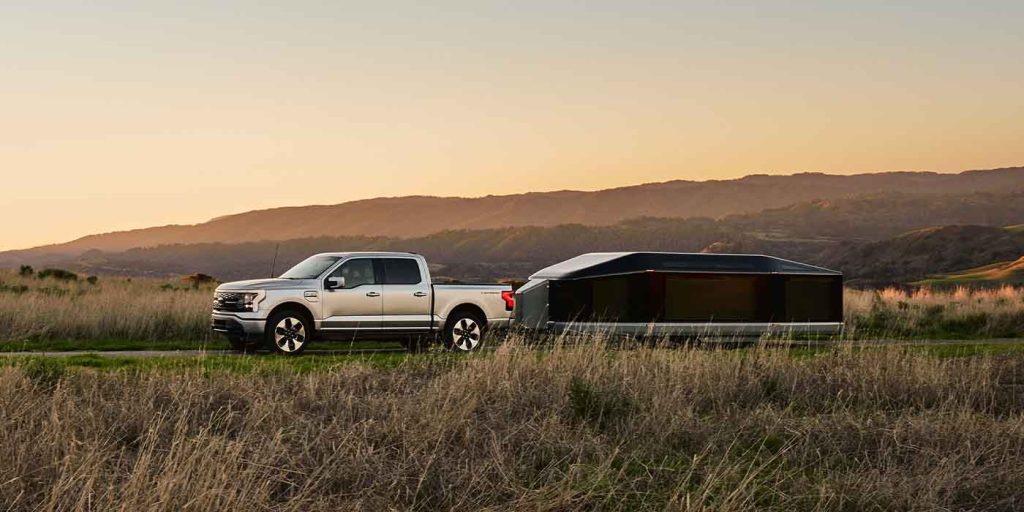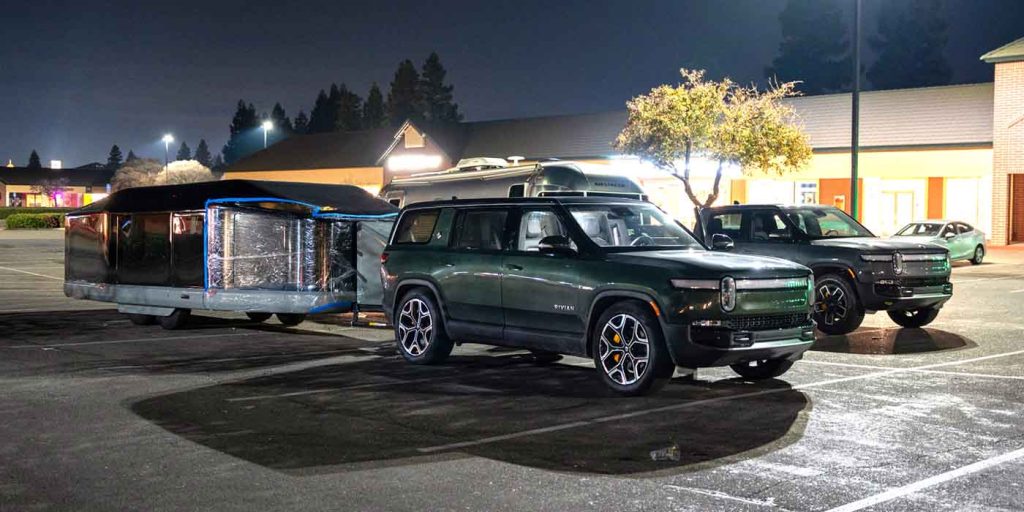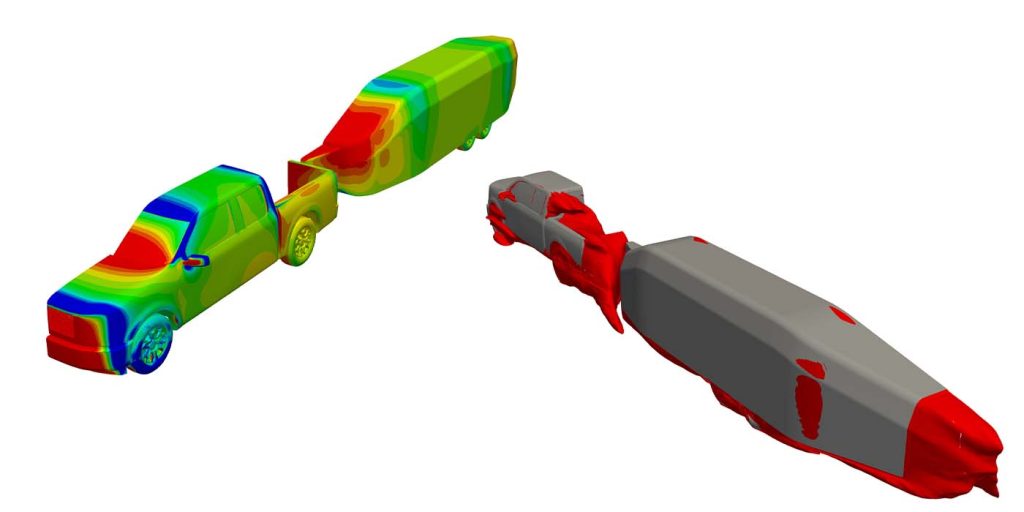
Ahead of initial production scheduled for 2024, electric RV startup Lightship is offering a peek behind its solar electric curtain, detailing the efforts that went into its flagship L1 towable trailer to ensure it arrives as the more aerodynamic option on the market.
Lightship is a San Francisco, CA, and Boulder, Colorado-based startup that heralds itself as the first all-electric RV company – designing battery-powered trailers for the all-electric age. It was founded in 2020 by Ben Parker and Toby Kraus – two industry veterans with notable tenures at Tesla.
We have followed Lightship since its inception, through to the official unveiling of its L1 electric RV trailer at SXSW this past March. This travel trailer is unique in its aerodynamic, modular design and comes equipped with its own all-electric powertrain and battery pack, alleviating the towing capacity for the vehicle in front of it.
The result is a towable EV that will empower future owners to drive further and more efficiently without recharging as much. The L1’s debut last spring did not disappoint, but we have admittedly been left craving more details as an electric trailer that maintains its towing vehicle’s range has the makings to be an absolute game-changer in a stale RV industry.
Today, Lightship shared details of the L1’s development process – particularly the keen focus its creators put on aerodynamics – as it works to deliver a true one-of-a-kind electric RV.
Every facet of Lightship’s electric RV is optimized for aero
As you’ll learn about in the video from Lightship below, the startup simulated thousands of hours in a virtual wind tunnel using advanced modeling software and help from Angus Lock, who was the lead aerodynamicist on the Tesla Roadster.
This cost-saving technique helped Lightship analyze the airflow behavior around competitor trailers and compare it to its own electric RV designs, enabling its final concept. The startup’s founders also gathered their experience in passenger EVs to develop L1’s unique “Dual Mode” design, which allows for a roomy cabin with 7’6″ of headroom when parked in “Camp Mode” before telescoping its hard-sided walls down to “Road Mode,” thus reducing the Coefficient of Drag and Frontal Area by 35-40%.
Lightship goes on to point out three specific areas it optimized the L1 electric RV trailer:
- Tongue Box: The trailer’s ever-so-important leading edge – dictating how the air interacts with the rest of the object downstream while in motion. The L1 features a storage box that helps stabilize the flow around the front of the vehicle while helping reduce the differential between the vehicle towing in front of it, regardless of whether it’s an EV or an ICE truck.
- Boat-tailed Rear: Shallow angles at the back help avoid inducing strong vortices, which can increase drag while maintaining the central portion of the cabin to ensure a queen-size bed can still fit.
- Electric Powertrain: The star of the show. Lightship’s L1 Long Range RV comes equipped with its own electric motor and battery, propelling itself while reducing the load on the tow vehicle and resulting in improved range.
R&D is vital in this process as Lightship looks to deliver a slam dunk on its first attempt to enter the RV market. However, simulations and computer designs can only go so far. At some point, real-world testing is necessary. To truly put the L1’s aerodynamics to the test, it towed an Essential version (no electric powertrain) 60 miles at a 60 mph pace using three different vehicles: a Rivian R1T pickup, R1S SUV, and gas-powered Ford F-150. For added comparison, Lightship also towed a “bullet-shaped trailer. Here are the results:
| Configuration | R1T EV | R1S EV | F-150 Gas |
| No Trailer | 2.17 mi/kWh | 1.97 mi/kWh | 23.2 mpg |
| “Bullet Trailer” | 0.93 mi/kWh | 0.96 mi/kWh | 10.2 mpg |
| L1 Essential | 1.26 mi/kWh | 1.33 mi/kWh | 14.4 mpg |
| L1 vs. “Bullet” | 0.33 mi/kWh (+35%) | 0.37 mi/kWh (+28%) | 4.2 mpg (+29%) |
Overall, the L1 is more efficient than its competitor, regardless of whether the towing vehicle is electric or combustion. Keep in mind that the data above does not account for the L1 Long Range, which promises to offer near-zero range loss thanks to its own drivetrain system.
Current electric pickup and SUV owners are seeing huge cuts to range when towing, making long trips with a trailer more difficult than a traditional ICE vehicle. However, Lightship’s L1 RV has solved that issue, even without its electric motor.
The Lightship L1 is currently available for pre-order with $500 down and is priced between $125,000 and $151,500, depending on which version you opt for. Production is expected to begin in late 2024.
Be sure to check out Lightship’s aerodynamic testing in the video below:
FTC: We use income earning auto affiliate links. More.






Comments